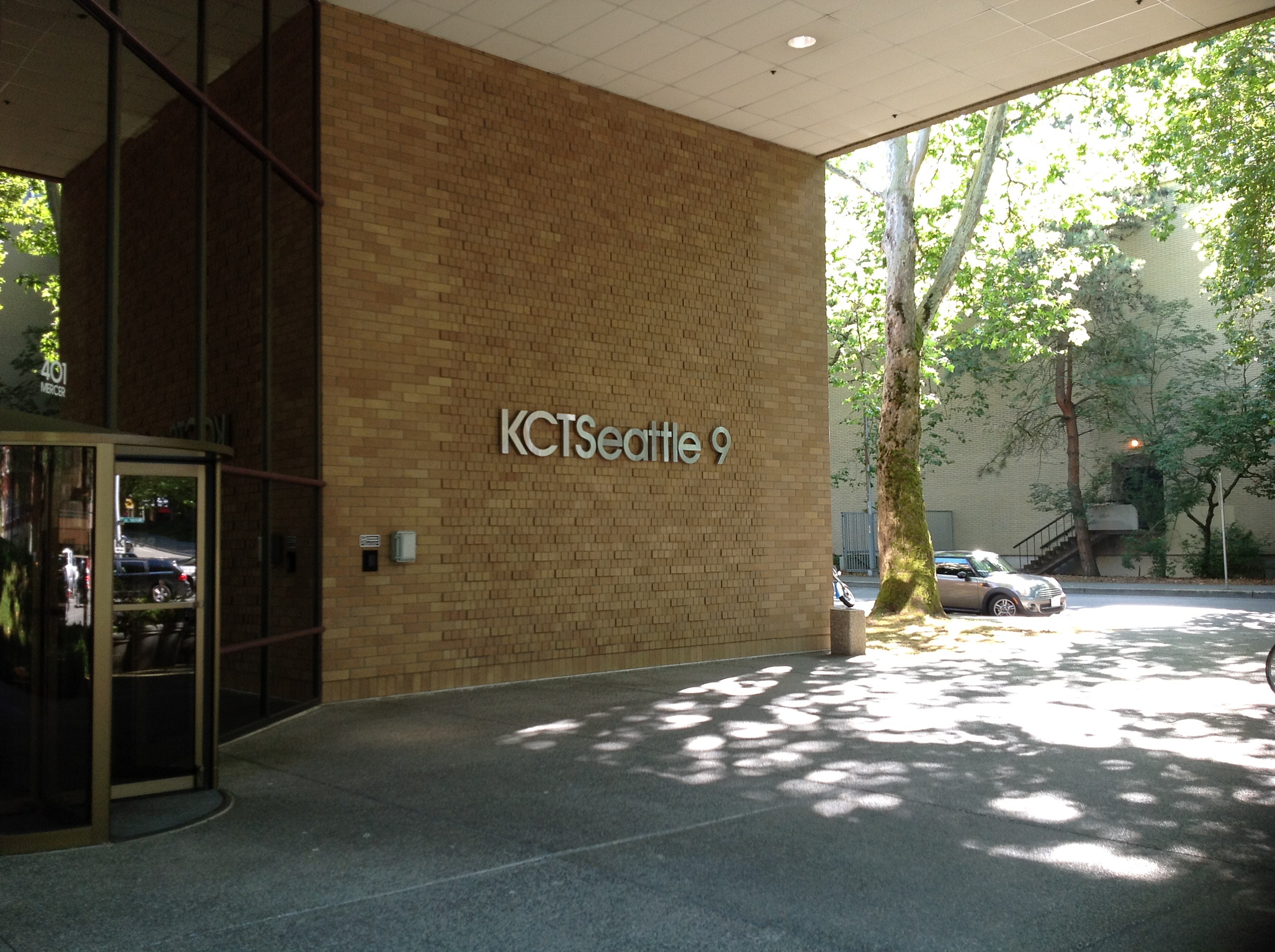Strategic Re-think
Happily, foundation support had already started to build. In November 2009, the Bullitt Foundation awarded IW a sizable grant: $40,000 for environmental investigative reporting. With the funds, staff reimbursed themselves for some start-up costs, and paid some key administrative expenses, including directors’ and officers’ insurance and libel insurance. But by late 2009, the group realized that InvestigateWest had to dramatically rethink its business plan. Despite its budding editorial success, IW was nowhere close to supporting itself. The writers had not been paid for nearly a year.

McClure in his office.
One thing was clear: syndication—operating what amounted to a small, specialized wire service—was not working. IW staff had gotten early feedback from some regional editors that syndication would generate little profit, but had elected to try anyway. Now the time had come to abandon the scheme—there simply were not enough customers. In addition, they concluded that the original regional focus was too ambitious. The small team did not have the resources to cover the entire West, much less foster community through a series of local events as the Point B plan had envisioned. Finally, even the small staff it had was too expensive—IW would have to scale back. As McClure recalls:
Within the first six months, we realized that this business plan that we had was not really workable. We just started thinking [for example], how are we going to do [regional] events? Are we going to do an event in Los Angeles? We’re all going to fly down there? That’s not going to work.
Burnout . What’s more, the staff were all exhausted. So from Christmas 2009, they started taking weekends off. As Hibbard recalls, “it was a mission, but you get burned out doing that. It was the first thing you’d think of in the morning and the last thing you’d think of at night.” McClure confirms: “We said, ‘this is not sustainable.’ You have to take time off. And then we startedactually taking some vacations.”Smith went so far as to explore switching to another line of work. “I teach tango on the side and I worked out business plans and determined that I couldn’t support myself teaching tango, but I might have if I could have,” she remembers.
As it happened, there was no need to dismiss staff: in March 2010, Lathrop left for the Dallas Morning News , taking with him his Web and database expertise. Not long after, Young quit to pursue an MFA in creative writing. That left Hibbard, Smith and McClure, plus freelancers and interns. While their reporting and IT capacity were diminished, the silver lining to the attrition meant they could justify paying themselves modest compensation—which they decided to do starting in June 2010.
Collaboration . Meanwhile, McClure in January had attended a weeklong multimedia training session at UC-Berkeley. It convinced him that the most efficient way for the small team to produce multimedia stories was to partner with area radio, television and online news organizations. In-house production stretched their resources too thin. He recalls:
Our really deep skills were all in print. So we figured out that we could partner with groups like [Seattle PBS television station] KCTS. It became clear to me that while we can and will develop multimedia skills, that was not the optimal use of our resources at that time.
Partnership with broadcast outlets was more complicated than simply selling a story, as IW had done to date. For one, it meant reaching agreement on what each party would deliver, who owned what, and how they would co-brand and promote the coverage. But IW was convinced it could be done; Hibbard, Smith, McClure and Young had been talking to area broadcasters for nearly a year about joint projects.
In early 2010, InvestigateWest finally struck a collaboration deal with KCTS. The two would jointly produce a story IW had found on the hazards facing healthcare workers handling chemotherapy drugs. Hibbard had been tipped to the story by a student attending a talk she gave. The student’s mother was a clinical oncology pharmacist dying of cancer. Smith had looked into it and learned that this wasn't an isolated case; yet, despite a higher incidence of illness among cancer caregivers, the federal Occupational Safety and Health Administration (OCHA) had set no limits on workplace exposure to chemotherapy drugs.Smith would work with KCTS reporters and editors on a video story for the television station.

KCTS in Seattle.
Meanwhile, the sealant story experience had taught IW that to make a profit, it had to sell each piece it produced across media platforms: print, broadcast and online. [14] So IW contracted to provide a print version of the chemotherapy workers story for the Seattle Times and a multimedia version for MSNBC.com. KCTS had contracted to pay IW $6,000 for its work; the Times would pay $500 and MSNBC.com another $1,200. If this kind of arrangement could be replicated, IW could earn thousands per story, versus the hundreds it had made so far in print and online freelance fees. If it could leverage reporting across media, that would increase its exposure. The increased exposure in turn could bolster grant applications, membership drives, and story pitches—meaning more income. It would be a virtuous circle.
But in the meantime, IW remained disconcertingly dependent on foundations.
[14] Syndication would have meant setting up a network of clients who would for a subscription fee would get all the content IW produced.